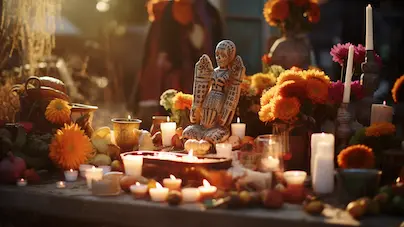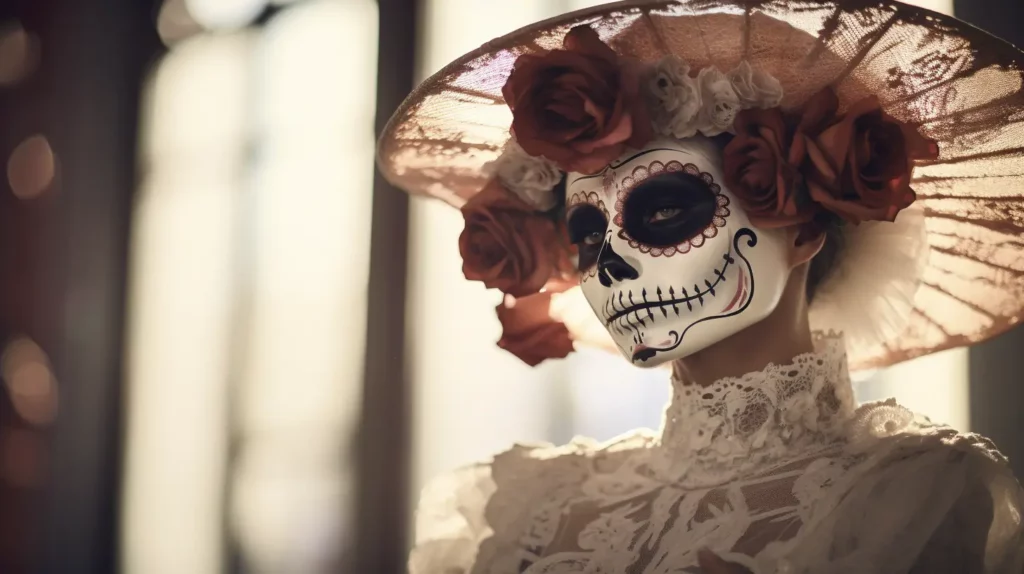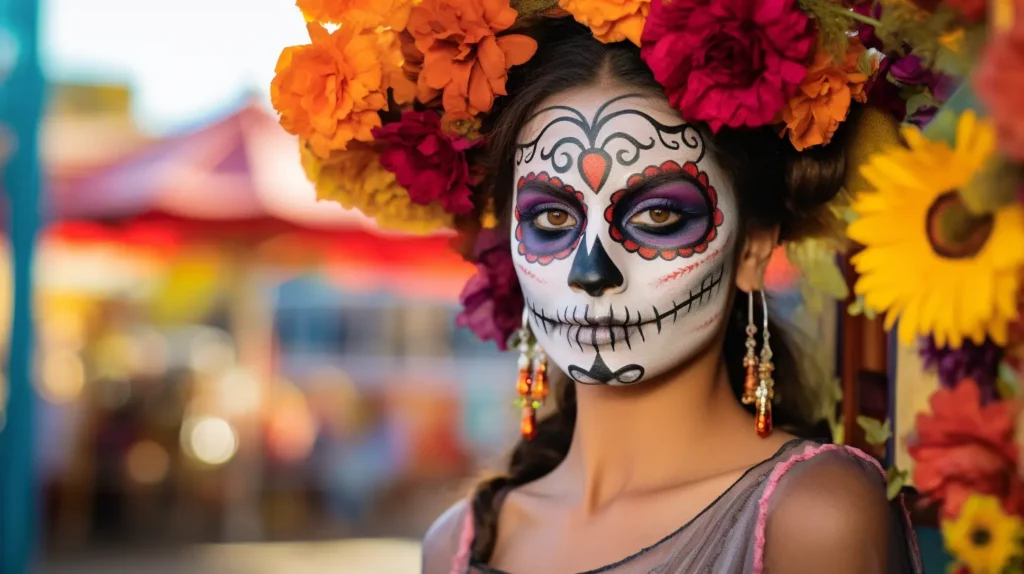Día de los Muertos, or Day of the Dead, is a unique and vibrant annual celebration held in Mexico. Transcending its common misinterpretation as the ‘Mexican Halloween,’ this event is far from a morbid occasion, instead, it is a vivacious expression of love, respect, and remembrance for departed family members. Rooted in pre-Hispanic traditions and later merged with Catholic celebrations, this deeply cultural event spans the first two days of November, or even three days in some localities, with rituals that have endured for millennia.

Día de los Muertos 2023
In 2023, Día de los Muertos begins on Wednesday, November 1st, and ends at midnight on Thursday, November 2nd. Depending on different localities, the festival may commence on October 31st, making it a three-day holiday. This day is considered to be the first day of preparation when families welcome the deceased by building altars with colorful decorations. This pre-celebration prepares the home and community for the spiritual return of their loved ones.
Origins of Día de los Muertos
The origins of the Day of the Dead trace back to the traditions of the Aztec, Toltec, and other Nahua people. They regarded mourning the dead as disrespectful, seeing death instead as a natural part of the continuum of life. According to these ancient cultures, the deceased remained integral members of their community, kept alive in memory and spirit. These beliefs form the foundation of Día de los Muertos, a time when it is believed that the spirits of the deceased return to Earth temporarily.
As Spanish conquistadors brought Catholicism to the region, this indigenous celebration became intertwined with the Christian observances of All Saints’ Day and All Souls’ Day. It was thus transformed into a syncretic celebration that occurs annually around the fall maize harvest.
Such is the cultural importance of Día de los Muertos that, in 2008, UNESCO added it to its list of Intangible Cultural Heritage of Humanity. This acknowledgment underscored the holiday’s significant role in promoting cultural diversity and preserving humanity’s shared heritage.
Día de los Muertos: A Tapestry of Traditions
Various customs and traditions interweave to create the vibrant tapestry that is Día de los Muertos. Among them are:
Ofrendas (Altars)

The creation of altars, or ‘ofrendas,’ in homes and cemeteries is a critical part of the celebration. Ofrendas are not for worship; rather, they serve as welcoming platforms for the spirits. They are laden with offerings like water, food, family photos, and a candle for each dead relative. If one of the spirits was a child, the altar might include small toys. Marigold flowers and the smoke from copal incense guide the spirits back and purify the area around the altar, respectively.
Literary Calaveras
‘Calavera,’ originally referring to short, satirical poems, has become synonymous with the Day of the Dead. These witty verses are often shared in print, read aloud, and broadcast on television and radio programs during the celebration.
Calavera Catrina

An iconic symbol of Día de los Muertos, Calavera Catrina, or the ‘elegant skull,’ was initially an etching by the Mexican political cartoonist José Guadalupe Posada. As a satire on Mexican society’s emulation of European sophistication, Posada depicted a skeleton dressed in upscale French attire. Today, the calavera Catrina is a ubiquitous symbol of the holiday, and people often don extravagant costumes and skull makeup that mimic her image.
Pan de Muerto

This sweet, rich bread, also known as the ‘bread of the dead,’ is a special treat made just for the holiday. It is baked in the shape of a round loaf with strips of dough laid on top to represent bones and a small dough ball on top symbolizing a tear.
Sugar Skulls

Sugar skulls are a common symbol of the holiday and are often used as decorations for altars. The tradition of sugar skulls is based on the ancient Mexican practice of preserving the skulls of the deceased as trophies, which were displayed during rituals symbolizing death and rebirth.
Cempasúchil (Marigold)

Marigold, also known as ‘cempasúchil’ or ‘flower of the dead,’ plays a significant role in the holiday. Its vibrant color and strong scent are believed to attract spirits and guide them to their altars.
Face painting

Dressing up and wearing makeup, particularly as colorful and ornate skulls, is a typical part of the celebration. The skull represents death in a playful and ironic manner, and its depiction is often lighthearted rather than grim.
Día de los Muertos: Celebrating Life, Remembering Death
While Día de los Muertos may involve skulls, altars, and gravesites, it is fundamentally a celebration of life rather than death. It’s a time for families and communities to come together in jubilant remembrance of their loved ones, share stories, and enjoy the rich tapestry of traditions that make up this culturally profound event. Each ofrenda, calavera poem, painted face, and piece of Pan de Muerto brings families closer to their ancestors and emphasizes the cyclical nature of life.
Far from being a single-day event, the Day of the Dead embodies a living tradition that continues to evolve, enriched by the collective memory and creativity of the Mexican people. With its intoxicating mix of pre-Hispanic, colonial, and contemporary traditions, Día de los Muertos offers a unique, compelling, and profoundly touching testament to the power of memory, the inevitability of death, and the unending vitality of life.

